Honda Civic Vs Mazda3 Comparison

It’s time for a rematch.
When we last pit the Mazda3 against the (outgoing) Honda Civic, it was a hatchback head-to-head. The Civic emerged victorious, but this time we’re looking at the classic four-door shape for both.
Get a Quote on a New Honda Civic or Mazda3The current Mazda3 reset the bar for how premium a mainstream compact sedan could feel. With a lux-feeling interior and grown-up driving dynamics, it straddles the line between the categories. Honda evidently took notes, because the latest Civic is so much classier than the edgy previous generation. There’s a lot of carry-over under the skin though—and the Mazda has the advantage of available all-wheel drive, a rarity in this class. So which one is more deserving of your hard-earned?
Interior and Cargo Space
Civic: We’re not kidding about the simplified interior. The old car took a real everything-and-the-kitchen sink approach to design, but this one is all clean lines and minimal distraction. The thin strip of mesh looks good, and hides the air vents. The pinstripe center console avoids the fingerprint-magnet that is piano black—though that still surrounds the mesh strip. A larger touchscreen sits proud of the dashboard, keeping it closer to the driver’s line of sight. The important controls—climate and audio—are close at hand, and the knobs rotate with a satisfying clickiness.
It’s an airy space, too: Honda made a concerted effort to lower the beltline of this latest Civic. It doesn’t raise as dramatically as before either, so second-row passengers won’t feel quite so penned in. Plus, visibility is excellent.
A low seating position helps the Civic score 37.6 inches (956 millimeters) of headroom up front. Leg room stands at huge 42.3 inches (1,074 mm). For those keeping score at home, that’s barely less than an Accord. The rear seat measures are naturally less, though 37.1 and 37.4 inches (942 and 950 mm), respectively, is nothing to sneer at.
The seats are very supportive, specifically in the lower back area. Rear seat riders do have to contend with flatter seat backs, however, and the raised middle perch eats into headroom. It’s the only spot that doesn’t feature heating, either.
Pop the trunk and our Civic Touring tester offers 14.4 cubic-feet (408 liters) of storage space. Other trims offer very slightly more, you see. A 60/40 split folding second row is standard across all trims.
Mazda3: Like we said at the start, the Mazda3 interior really nips at the heels of the premium establishment. It’s a stylish place to spend time, with a layered, organic dashboard design that feels more inviting than the rigid Civic. The stitching helps, too. It isn’t all rosy, though: Mazda relegates the audio controls to a tiny little knob beside the shifter, making it hard to use on the move, even for passengers.
The overall sense of space is good, if not quite as cavernous as the practically-mid-sized Civic. The 3’s biggest disadvantage is a tighter rear seat, with a rising windowline and thick C-pillar conspiring to make it less accommodating. The door openings are also tighter, which results in a few light bonks to the head when swapping between the two cars for photos. Admittedly, you’ll get used to it when you’re living with one of them.
That stylish exterior does require some sacrifices in the space race—but not up front. Headroom is barely behind the Civic at 37.6 inches (954 mm), and the leg room is a single millimeter more (42.3 inches / 1,075 mm) than in the Honda. It’s the rear seats that suffer, slightly with the headroom (36.7 inches / 931 mm) and significantly with the legroom (35.1 inches / 891 mm). The 3 is also a little narrower than the Civic, which makes the second-row bench a squeeze for three adults.
Even though Mazda has a (deserved) reputation for driving enjoyment, the front seats are flatter and slightly less supportive than expected. On the flip side, if the goal is to siphon off sales from the lucrative luxury segment, the Mazda’s seats feels built for distance.
A slightly narrow trunk opening grants access to 13.2 cubic feet (374 L) of storage space. Like the Civic, a 60/40 split folding second row is standard.
Bottom Line: Even with the glow-up, the Civic’s interior styling can’t quite match the sweetness that is a modern Mazda3. You’ll pay for that fanciness though, with a tighter second row being the biggest penalty. Still, if we’re going to spend a lot of time behind the wheel, we’d rather do it in the Mazda.
SEE ALSO: Toyota Corolla vs Hyundai Elantra ComparisonTech and Features
Civic: In top Touring trim, the Civic features a 9.0-inch touchscreen. It uses the brand’s tile-based infotainment interface, which isn’t the prettiest (nor fastest), but scores high on the ease-of-use scale. An added bonus? Wireless Apple CarPlay and Android Auto. Every other trim uses an 8.0-inch screen, and require the cord.
Sitting ahead of the driver is a 10.2-inch digital instrument panel. It too is a Touring exclusive, but boy is it useful. Navigation directions display in the central section, even when using your paired device’s Apple Maps. We’re also fans of the driver assist view, which shows a little digital Civic avatar. Activate a turn signal or tap the brakes, and the display mirrors them. Fun stuff! Touring trims also feature a 12-speaker Bose sound system.
Speaking of driver assists, the adaptive cruise control works naturally. The system leaves reasonable gaps between the Civic and the car ahead, and accelerates in a natural way.
Mazda3: Every Mazda3 uses an 8.8-inch screen, though its ultra-wide aspect ratio makes it feel slightly smaller. What’s more, it’s not a touchscreen. We’ve documented this before, and we’d be remiss if we didn’t mention why Mazda did this (because yes, it’s a conscious decision). The Japanese automaker argues that touchscreens are a driving distraction. We don’t necessarily disagree, but the total lack of touch capability means even passengers have to contend with the iDrive-like rotary dial in the center console. It’s not intuitive, and that gets worse if you need to navigate Apple CarPlay or Android Auto (both standard, and wired). Plus, the system isn’t exactly Zoom-Zoom fast.
The rest of the package is still impressive, though. The instrument cluster is a clever mix of digital and analog, keeping the central screen customizable for pertinent info. A head-up display is crisp and adjustable enough that drivers both tall and short can clearly read it. Like the Civic, the 3 features a 12-speaker Bose sound system, capable of pumping out your favorite tunes at a volume and clarity unimaginable in compact cars a decade ago.
SEE ALSO: Toyota RAV4 vs Nissan Rogue ComparisonThe Mazda’s driver assist suite is as wide-ranging as the Honda’s, and works similarly seamlessly. Adaptive cruise control, for instance, ramps up speed in a linear fashion.
Bottom Line: Ignore the lack of touch controls, and we like the Mazda’s tech suite more. But we can’t do that: touchscreens are a very natural input method, especially for passengers, and to not even offer it as an option means the Mazda simply can’t win this category.
Powertrain, Driving Feel, and Fuel Economy
Civic: Pony up for the Touring trim and you’ll find Honda’s familiar 1.5-liter turbocharged four-cylinder under the hood. This little motor produces a strong 180 horsepower and 177 pound-feet of torque. Want that funnelled through one of Honda’s sweet-shifting six-speed manuals? You’ll have to look at the hatchback for that: the sedan is only offered with the continuously-variable transmission. Power hits the pavement via the two contact patches up front.
There was a time where the mere mention of a CVT caused faces to shrivel up more than a week-old raisin in the desert. Not anymore. Honda has reworked the unit in the Civic for smoother take-up, minimizing much of that elastic-band feeling typical of these setups. It helps that the Civic can rely on a big slug of low-rev torque, so the CVT rarely has to blare like grandma’s TV. When you really need every one of those ponies, the power is there.
The Civic’s suspension tuning has long straddled the line between comfort and control. I’m happy to report that’s still the case here. The Civic rides with a confident firmness, just enough to remind you it can still have fun should the road suggest it. Steering feedback is minimal, but there’s good, consistent weight as soon as the wheel turns. The brake pedal is well-judged too, with strong bite early in its travel.
Honda quotes fuel economy figures of 31 mpg city, 38 mpg highway, and a combined 34 mpg. Canadian figures are 7.6, 6.1, and 6.9 L/100 km, respectively.
Mazda3: Mazda has long valued driving enjoyment, and the current Mazda3 continues that tradition. It’s a more grown-up driving experience now though, with a quieter cabin a welcome change. The engine goes for displacement instead of a turbo, with a full liter more swept volume than the Civic’s little four-pot. The 2.5-liter has square outputs, with 186 hp and 186 lb-ft of torque heading through a six-speed automatic. This tester sends that power to all four corners, a relative rarity in this class. You can have a six-speed manual, but then it’s front-drive only.
The drivetrain is generally quite good. The big-bore engine is a strong motivator, but the gearbox only has six ratios to choose from, so the 3 can occasionally get caught out on the road. When this happens, the engine can sound unrefined as it revs up, disrupting the calm equilibrium Mazda’s engineers have spent so much time cultivating. I’d love to tell you how AWD is an advantage in low-grip scenarios, but this test happened during the last days of summer.
That being said, the AWD does slightly dull the Mazda3’s turn-in. Thank the extra weight. It’s still a great drive, with a well-weighted steering wheel offering more feedback than the one in the Civic. Mazda’s leather is on another level, too. It’s why we’d consider the turbocharged model a genuine entry-level luxury competitor. The brake pedal builds confidence, too. The Mazda is comfortable on the highway, smoothing out bad bumps without much noise. Point its low nose at a squiggly bit of tarmac and it’s still a good bit of fun.
SEE ALSO: 3 Reasons the 2021 Mazda3 Turbo Succeeds as a Luxury Car (and 3 it Doesn’t)AWD does come with a penalty: the EPA says the Mazda3 will score just 25 mpg city, 33 mpg highway, and 28 mpg combined. Even a front-drive model trails the Civic, with scores of 26/35/30, respectively. Canadian figures are 9.3, 7.0, and 8.2 L/100 km for the AWD model.
Bottom Line: No question: these two are the best-driving duo in the class. Even hauling around the extra weight of the AWD system, the Mazda3 is the one we’d rather take the long way home in. On the flip side, that all-paw grip should help it in colder climes. The miles per gallon are higher, sure, but so are the smiles. It wins here.
Safety
Civic: Honda includes a wide-ranging suite of driver assists on every Civic trim. Dubbed Honda Sensing, it includes automated emergency braking, lane departure warning, lane keep assist, and auto high beams. Traffic sign recognition, adaptive cruise control (with Traffic Jam Assist) and rear seat reminder are also included. The Touring trim adds blind spot monitoring with cross-traffic alert and low-speed brake control.
As part of its 2022 redesign, the Civic scored a Top Safety Pick+ rating from the Insurance Institute for Highway Safety (IIHS). On the other hand, the National Highway Traffic Safety Administration (NHTSA) hasn’t tested the latest Honda compact, though we expect it to match the outgoing car’s 5-star rating.
Mazda3: Mazda includes automated emergency braking, lane departure warning, lane keep assist, adaptive cruise control, auto high beams, and driver attention alert on every Mazda3. Blind-spot monitoring and rear cross-traffic alert show up on the Select trim. Things are different in Canada, only those latter two are standard on the base GX trim, and the rest show up on the mid-level GS. Higher trims balance out on both sides of the border. Here you’ll find the 360-degree camera, Traffic Jam Assist, and parking sensors on both ends, plus traffic sign recognition.
The Mazda3 matches the Civic’s Top Safety Pick+ rating over at the IIHS. It also scores a perfect 5-star rating across every one of the NHTSA tests, just like the 10th-generation Civic.
Bottom Line: This category is essentially a tie, and the best one at that: both of these sedans are very safe for you and your family. Which gains the edge depends on which side of the border your reside: the Mazda has a skimpier driver assist suite north of the border in its base trim, but features slightly more goodies at the top end, in both Canada and the US.
SEE ALSO: Subaru Outback vs Subaru Forester ComparisonStyling
Civic: A baby Accord. That’s what the Civic is now. Some will like it—yours truly included—while others will miss the dramatic styling of the last generation. In course-correcting to this more conservative look, Honda has managed to make the Civic’s styling divisive once more. We think it’ll age a lot better, though.
Mazda3: It’s been a couple years now, but the Mazda3 remains the prettiest car in the class. The low nose, wide-set lights, and elegant side surfacing make a convincing case for the 3 to be considered alongside the German entry-level sedans. While overall we’re more smitten with the shape of the hatchback, the sedan is still a classy package—and its C-pillar isn’t quite such a visibility issue.
Bottom Line: Tastes vary, so you’ll have your preference. For us, it’s the prettier Mazda that appeals to the ol’ eyeballs.
SEE ALSO: Honda Civic vs Toyota Corolla: Which Compact Sedan is Right For You?Pricing and Value
Civic: You’ll need to shell out $22,915 ($26,165 CAD), including destination, to get into a base 2022 Civic. That sum includes the 2.0-liter engine, 16-inch steelies, LED headlights, cloth interior, and a four-speaker sound system. Honda Sensing is standard.
Our top-shelf Touring trim tester registers $29,910 ($32,265 CAD). The only option at these heady heights is the paint, with Platinum White Pearl contributing to $395 ($300 CAD) of that bottom line.
Mazda3: The Mazda undercuts the newer Civic, ringing in at $21,645 ($22,500 CAD). The gap is a little over a grand in the US, but nearly triple that in Canada. That’s because the Canadian model does without many of the standard safety features found in the US, and because Canucks can still order a six-speed manual. The six-speed automatic tacks another $1,300 CAD onto the bottom line.
Our tester is the most jam-packed 3 you can snag without moving up to the turbocharged model. ( The turbo AWD setup really does elevate the Mazda3 to a credible premium competitor). With AWD and its Machine Grey Metallic paint, the 3 comes with a $29,890 ($34,250 CAD) price tag. Skip the AWD, and you’re looking at $28,490 ($32,500 CAD).
Bottom Line: As is usually the case, where you live determines how good-value these two are. The Mazda3 offers up a lower point of entry, but it doesn’t come quite as well equipped (especially in Canada). Proving its good value in the US, even our AWD tester undercuts the Civic by the tune of 20 whole dollars. Meanwhile, in Canada, even the front-drive version is slightly richer than the Honda. Taking that all into account, it’s the Mazda which stretches a dollar further.
SEE ALSO: Hyundai Elantra N Line vs Volkswagen Jetta GLI Comparison: Healthy CompetitionVerdict: Honda Civic vs Mazda3 Comparison
These two Japanese compacts are closer than ever. Both offer up big-car vibes, with mature dynamics, relatively quiet interiors, and the sort of build quality we wouldn’t have thought possible for this class a decade ago.
We love the Mazda3’s oh-so-pretty interior, the best in anything under $40,000. And the outside is easy on the eyes, too. The 3 falters in the space race though, plus its infotainment is pointedly anti-passenger. The driving dynamics are still class-leading, and the option of AWD works in the Mazda’s favor in northern markets. That’s not quite enough for it to finish ahead of the newcomer, though.
The 2022 Honda Civic is a better all-around package. It gives up a bit of the driving panache we love so much in the Mazda3, but the Civic is a better family vehicle, with more space and friendlier technology. If you need the AWD, or simply must have the best-driving car in the class, go for the Mazda. Everything else? It’s the Civic this round.
Become an AutoGuide insider. Get the latest from the automotive world first by subscribing to our newsletter here.

Kyle began his automotive obsession before he even started school, courtesy of a remote control Porsche and various LEGO sets. He later studied advertising and graphic design at Humber College, which led him to writing about cars (both real and digital). He is now a proud member of the Automobile Journalists Association of Canada (AJAC), where he was the Journalist of the Year runner-up for 2021.
More by Kyle Patrick




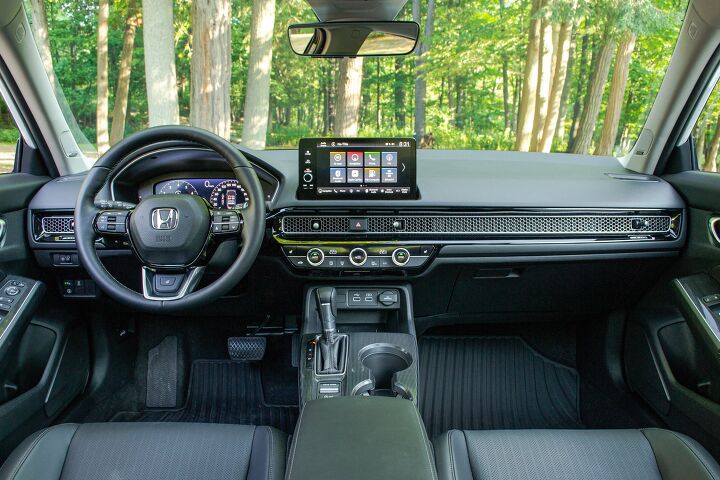


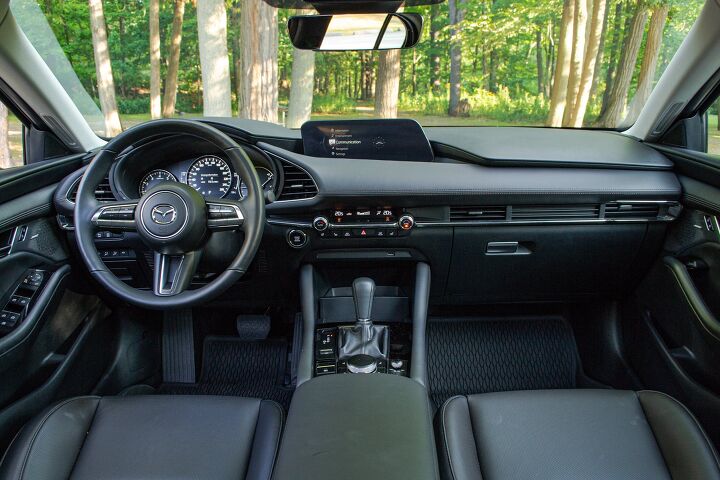
































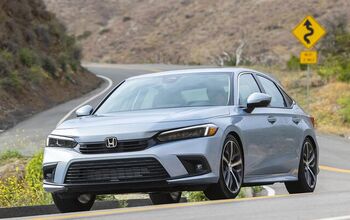

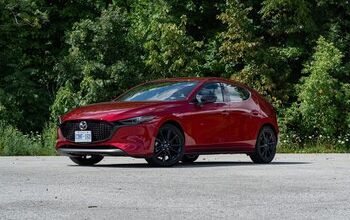
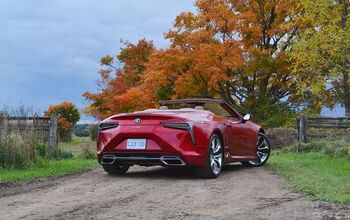
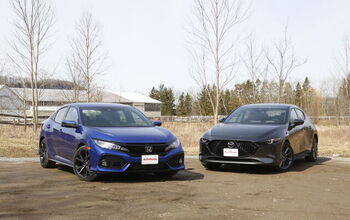

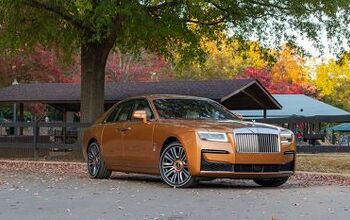
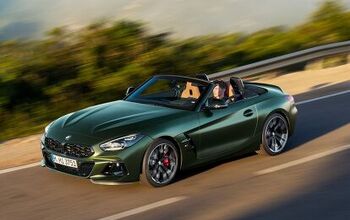
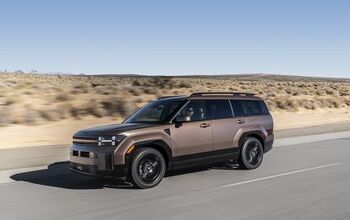


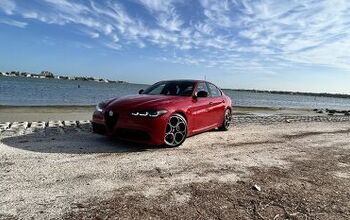


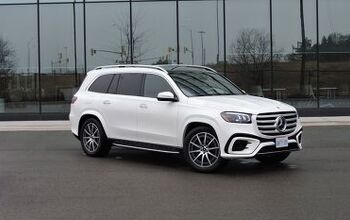
Comments
Join the conversation
What a joke! Mazda3 since 2004 has been better than cheesy Civic and it continues.... paid advert by Honda.
As a new Mazda 3 owner, I believe that the testers just didnt spend enough time with the infotainment system. One of the reasons I opted for the 3 is that the rotary knob allows for very easy movement between stations, without resorting to a smudgy touchscreen or electronic sensors that might not always work properly. The 3 strikes me as a classy car that works for people of all ages.